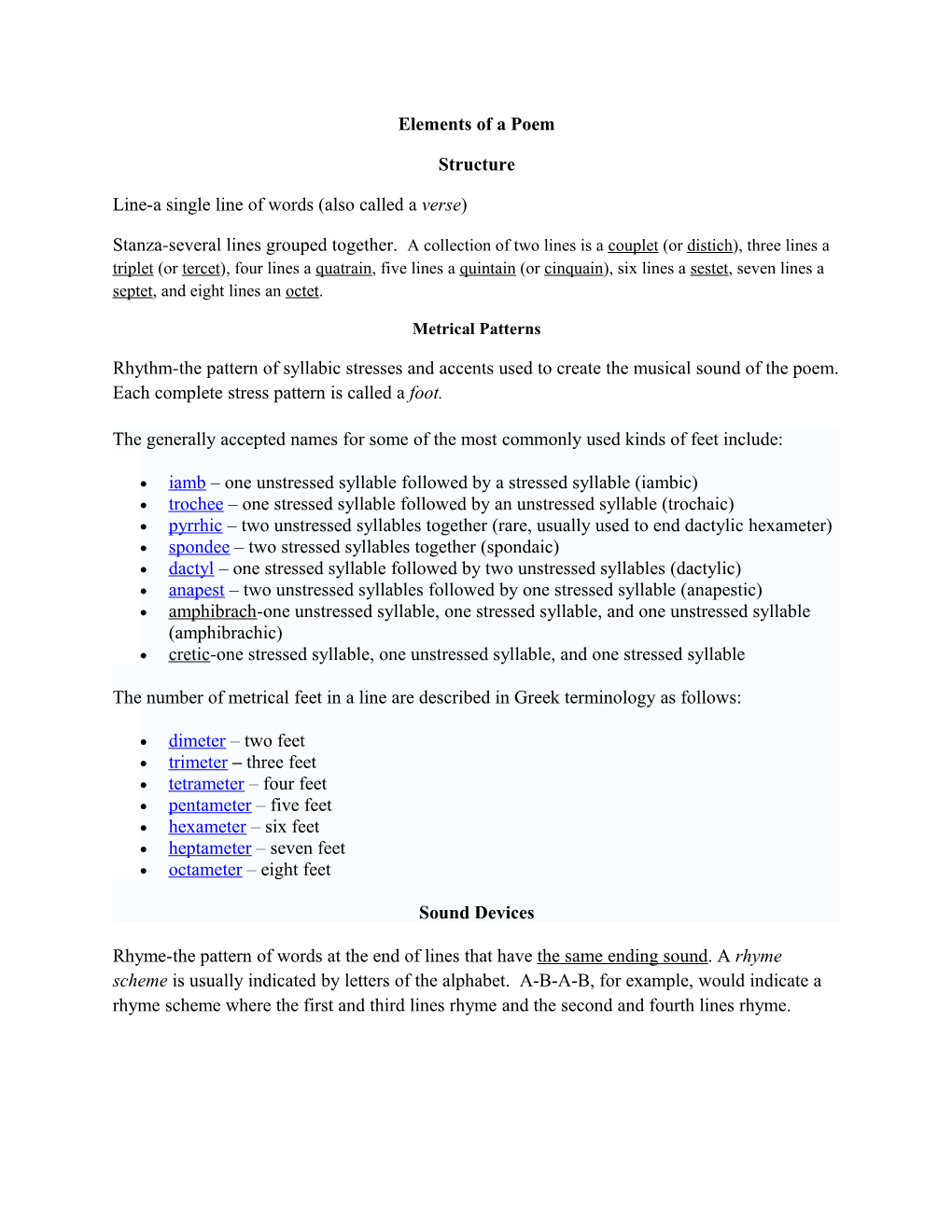Elements of a Poem
Structure
Line-a single line of words (also called a verse)
Stanza-several lines grouped together. A collection of two lines is a couplet (or distich), three lines a triplet (or tercet), four lines a quatrain, five lines a quintain (or cinquain), six lines a sestet, seven lines a septet, and eight lines an octet.
Metrical Patterns
Rhythm-the pattern of syllabic stresses and accents used to create the musical sound of the poem. Each complete stress pattern is called a foot.
The generally accepted names for some of the most commonly used kinds of feet include:
- iamb – one unstressed syllable followed by a stressed syllable (iambic)
- trochee– one stressed syllable followed by an unstressed syllable (trochaic)
- pyrrhic – two unstressed syllables together (rare, usually used to end dactylic hexameter)
- spondee – two stressed syllables together (spondaic)
- dactyl– one stressed syllable followed by two unstressed syllables (dactylic)
- anapest– two unstressed syllables followed by one stressed syllable (anapestic)
- amphibrach-one unstressed syllable, one stressed syllable, and one unstressed syllable (amphibrachic)
- cretic-one stressed syllable, one unstressed syllable, and one stressed syllable
The number of metrical feet in a line are described in Greek terminology as follows:
- dimeter – two feet
- trimeter– three feet
- tetrameter – four feet
- pentameter – five feet
- hexameter – six feet
- heptameter – seven feet
- octameter – eight feet
Sound Devices
Rhyme-the pattern of words at the end of lines that have the same ending sound. A rhyme scheme is usually indicated by letters of the alphabet. A-B-A-B, for example, would indicate a rhyme scheme where the first and third lines rhyme and the second and fourth lines rhyme.
Other sound devices:
Alliteration Onomatopoeia
AssonanceCacophony
Consonance
Figurative Language Devices
Allusion
Anaphora
Antithesis
Chiasmus
Euphemism
Hyperbole
Imagery
Irony
Metaphor
Metonymy
Oxymoron
Paradox
Personification
Simile
Synecdoche
Understatement
